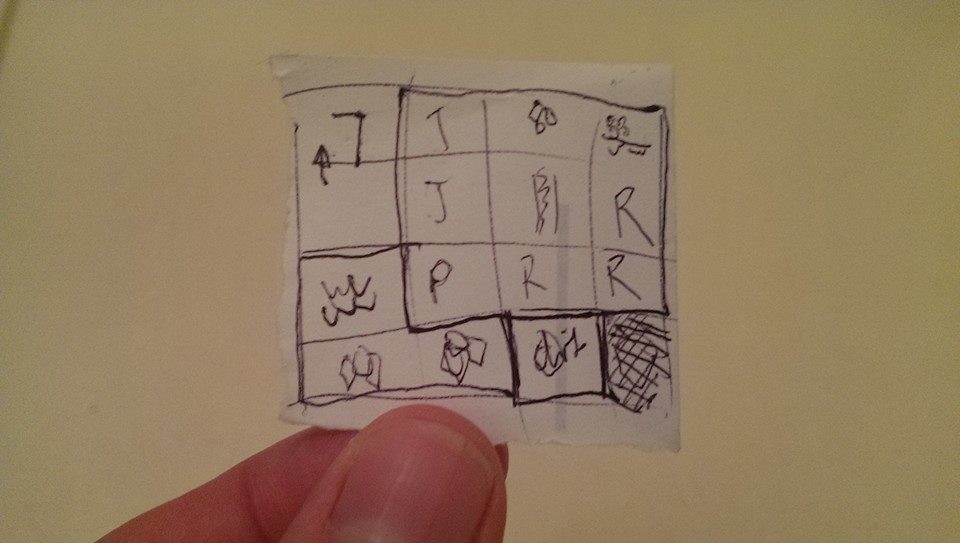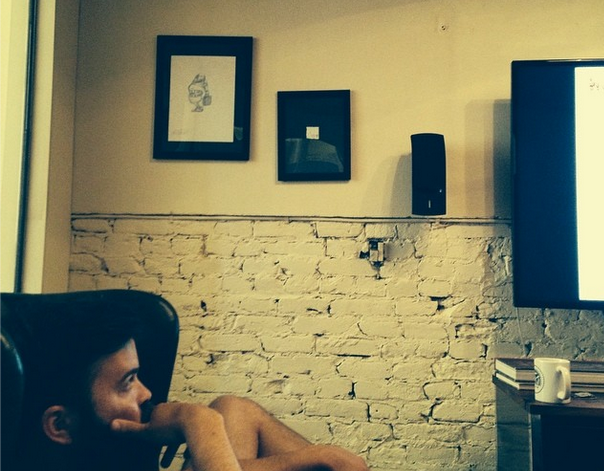SuperMighty's Analog Game Design Gallery
George Hemingway
October 10, 2014
Just like many other game developers, I have filled numerous scrapbooks with rough game design sketches.
These sketches may include character/asset drawings, GUI wireframes, level design layouts, and diagrams to help construct algorithms.
Recording ideas on paper helps me analyse them from another perspective so I can expand and evolve them further.
I hadn't thought much about why I sketch ideas on paper or whether it holds much importance until I crossed paths with SuperMighty, a young software company based in Philadelphia.
Earlier this year, SuperMighty contacted me as they were interested in a game design drawing I posted on the internet.
They have a wall in their office dedicated to "analog game design artifacts" which includes hand crafted concept art, level sketches, brainstorms, or beautiful mind schematics.
 My pocket size / on the move level design sketch
My pocket size / on the move level design sketch
Initially, I was taken by surprise when developers on the other side of the world were interested in hanging my game design sketch on their wall.
The sketch had personal value and I wasn't expecting anyone to take much notice.
It was something I drew a couple of days before I submitted my Postbug game to the PAX Australian Indie Showcase back in June.
My brother suggested that I should make my demonstration shorter so that the game could be reviewed efficiently.
It was a dramatic change one week before submission as it involved sizing back the world from 25 rooms (5 x 5) to 16 rooms (4 x 4).
I drew a tiny diagram to restructure the rooms and titled it, "My pocket size / on the move level design."
 "@hemingwaygames - your level design sketch has been hung!"
"@hemingwaygames - your level design sketch has been hung!"
My tiny level design sketch has been mailed to the other side of the world, and now sits on SuperMighty's wall in a frame 5 times its size.
Art can take many forms, however SuperMighty have extended their interests to design sketches produced during game development.
This is just one of the many ways SuperMighty engage with their community.
They hosted a Philly Dev Night back in July and frequently volunteer at Philabundance.
SuperMighty's primary focus however is building their game SDK (TheMighty.io) for game studios which ties in-app purchases with charitable donations.
I have since kept the 16 room design for the final version of my game.
Postbug is a difficult game, and the fact that there are only 16 rooms to complete is my challenge to the player.
I never wanted to use a potential number of playable hours as a game design goal or measurement.
Instead, it is possible to finish Postbug in under 15 minutes.
The gameplay hours will however build up as the player learns the world's rules and formulates strategies for avoiding the many dangers.
My sketch which sits on SuperMighty's wall represents more than just the game's level design,
it represents my game design goal of presenting a challenge to the player to complete a small but difficult game.